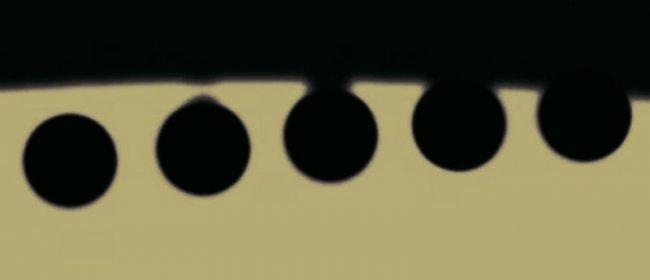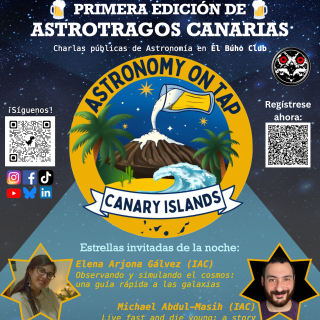The European project STARS4ALL, in collaboration with the sky‐live.tv website, will conduct a live broadcast of the phenomenon from Tenerife and Iceland. STARS4ALL will also offer educational activities for students.
On May 9, 2016, around noon, the planet Mercury will start to cross the disk of the Sun on a journey to be completed in just over seven hours.
The transits of inner planets such as Venus and Mercury are rarer than eclipses of the Sun and Moon. While transits of Venus are extraordinarily unusual phenomena ‐ occurring on average twice in a century‐ transits of Mercury are more frequent. On average we have 13 Mercury transits per century, which occur in the months of May or November. The last transit was that of Venus in June 2012. We had a transit of Mercury in November 2006. But, this event was not visible in Europe. The last visible transit of Mercury from Europe was in May 2003 (see figure 4) and the next will occur in November 2019, which will be partially visible in Europe.
The transit of Mercury next May 9 will be completely visible in Western Europe, the US east coast and in almost all Latin America (see map shown in figure 2).
The STARS4ALL project in collaboration with various institutes and organizations, will coordinate a live broadcast to watch the event with solar telescopes and digital cameras. Videos and pictures of transit will be broadcasted live on internet (collaboration with the portal sky‐live.tv) from Tenerife, La Palma and Fuerteventura (Canary Islands) and Iceland. There will be live commentary in Spanish and English during broadcasts.
Miquel Serra‐Ricart, astronomer of the Institute of Astrophysics of Canary Islands (Instituto de Astrofísica de Canarias, IAC) and person in charge of broadcast, said: "The transit of Mercury is a good opportunity to organize educational activities in schools. It is a simple phenomenon to observe but governed by fundamental laws of physics. It is important to recall that the observation must be done following strict security measures so that the sun does not damage our eyes.”
Black drop
Just after the internal contact between the discs of the Sun and Mercury the apparent surface of the planet seems to remain connected for a few seconds to the edge of the solar disk, deformed to adopt the appearance of a black drop. This phenomenon is repeated just before the last internal contact (Fig. 1). The effect, known as "black drop" prevents precise timing of the moments of contact between the disk of the planet and the Sun. This is the main reason why observations ‐especially in Venus transits‐, that were conducted to determine the distance between the Sun and Earth, present a certain degree of uncertainty. The phenomenon is mainly due to the effects of atmospheric turbulence of our planet (which in astronomical terms is known as "seeing") and the quality and size of the optical instruments used.
Broadcast
Three live connections will be made with a total duration of 30 minutes coinciding with the most interesting moments:
Connection1: Mercury enters the Solar disc (First / Second Contact 10 minutes) May 9, 2016, from 11:10 to 11:20 UT (13:10 to 13:20 CET; 12:10 to 12:20 Local‐Tenerife).
Connection2: Мaximum Transit (10 minutes) May 9, 2016, from 14:55 to 15:05 UT (16:55 to 17:05 CET, 15:55 to 16:05 Local‐Tenerife)
Connection3: Mercury exits the solar disc (Third / Fourth Contact 10 minutes) May 9, 2016, from 18:35 to 18:45 UT (20:35 to 20:45 CET, 19:35 to 19:45 Local‐Tenerife)
Note: UT ‐ Universal time ; CEST‐ Central European Summer Time.
The portal will be kept updated from May 9 at 11:00 UT (13:00 CEST, Madrid) and every five minutes the image of the Sun (and Mercury) will be updated from the different points of observation. All images collected will be immediately available for use in educational activities.
STARS4ALL is a project funded by the European Union H2020 Programme under agreement number 688135. STARS4ALL is composed of 8 institutions (UPM, CEFRIEL, SOTON, ECN, ESCP Europe, IAC, IGB, UCM) from 6 countries. STARS4ALL project will develop a collective awareness platform to encourage citizens to care for and preserve the natural darkness of European nightscapes.
- STARS4ALL website http://www.stars4all.eu/
- Educational Activity: http://astroaula.net/ing/recursos‐didacticos/actividades/transito‐de‐venus/
- Broadcasting information: sky‐live.tv/mercury2016
- Local circumstances of Transit: http://xjubier.free.fr/en/site_pages/transits/ToM_2016.html
- High resolution images of Transit of Venus (2012 june): https://flic.kr/s/aHsjH2BStP
Press contacts: http://www.stars4all.eu/index.php/pressoffice/
Press release of the live broadcasting of the transit of Mercury from the Canary Island Observatories: http://www.iac.es/divulgacion.php?op1=16&id=1061&lang=en



